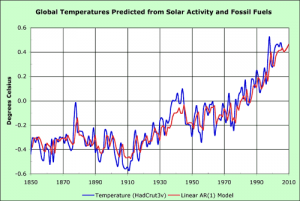Difference between revisions of "Statistical Modeling"
| Line 5: | Line 5: | ||
==Background== | ==Background== | ||
| − | A generalized and valid method of research that can be applied to statistical modeling is the [http://misterguch.brinkster.net/scientificmethod.html scientific method]. | + | A generalized and valid method of research that can be applied to statistical modeling is the [http://misterguch.brinkster.net/scientificmethod.html scientific method]. It begins with a question and the desire to find an answer to the question. This can be formulated by an individual or group of researchers or by a company. It is important to formulate a strong hypothesis as this will be the basis of the research being conducted. The next step is to decide what sort of data needs to be collected in order to help answer the question and provide enough evidence to accept or reject the hypothesis. The researcher then goes on to plan out a methodology for data collection. This leads to the actual collection of data. At this point, an data can be quantified and an interpretation can be made. |
| + | ==Techniques== | ||
==Uses== | ==Uses== | ||
Revision as of 23:45, 9 October 2012

Statistical Modeling is the process by which events of interest are approximated using statistical methods and interpretation. The goal of statistics is to bring uncertainty and complexity into an organized form, allowing it to be quantified.[2] This can be very useful when trying to determine accuracy of collected data, or for approximating the course of an event which has not yet occurred. Though much of statistics can be performed without computers, technology plays a critical role in the ability to generate accurate and useful models for any amount of data.
Contents
Background
A generalized and valid method of research that can be applied to statistical modeling is the scientific method. It begins with a question and the desire to find an answer to the question. This can be formulated by an individual or group of researchers or by a company. It is important to formulate a strong hypothesis as this will be the basis of the research being conducted. The next step is to decide what sort of data needs to be collected in order to help answer the question and provide enough evidence to accept or reject the hypothesis. The researcher then goes on to plan out a methodology for data collection. This leads to the actual collection of data. At this point, an data can be quantified and an interpretation can be made.
Techniques
Uses
In Medicine
Recommender Systems
Ethical Concerns
See Also
Data Mining
Data Aggregation Online
References
- ↑ Cobb, Loren. The Causes of Global Warming: A Graphical Approach. 2007. Photograph. n.p. Web. 9 Oct 2012. <http://tqe.quaker.org/2007/TQE158-EN-GlobalWarming-V1.html>.
- ↑ Kaplan, Daniel. Statistical Modeling: A Fresh Approach. 2nd ed. Saint Paul: Project Mosaic, 2012. vii. Print.